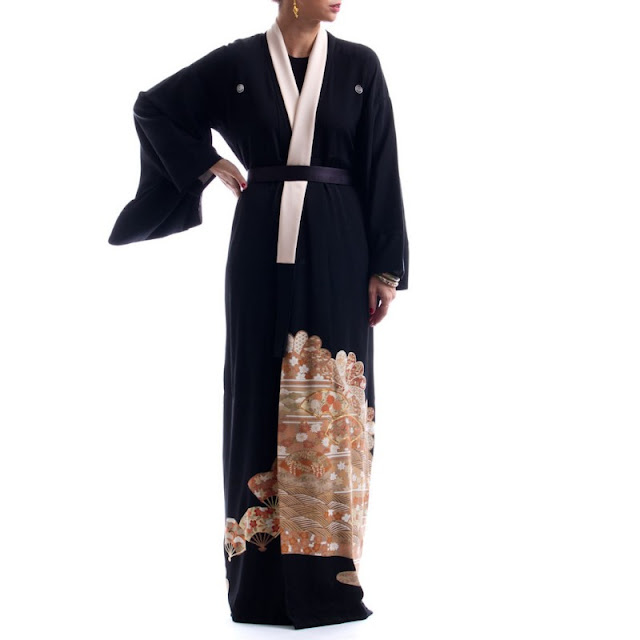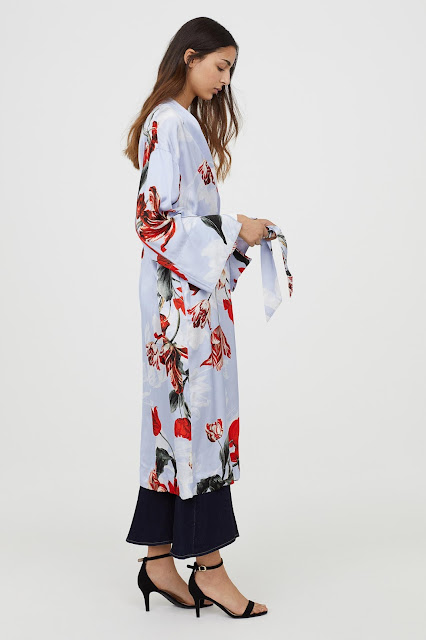Dressing The Part: Halal Fashion Shows Signs Of Growth And Market Leading Innovation
Chika Collection: Kimono Abaya
- Muslim consumer spending on clothing was estimated to have reached $243 billion in 2015, $44 billion of which were spent on halal clothing.
- Spend on Modest Fashion is projected to reach $368 billion by 2021
- Dolce and Gabbana, Burberry, Uniqlo, H&M, Carolina Herrera and Toms have all launched Muslim-friendly collections. American Apparel launched denim hijabs.
- Muslim model, Halima Aden became the first hijabi to grace the cover of Vogue.
- Dubai based designer Manaal Al Hamaadi recently created the first solar-powered abaya, and a crowdfunding campaign was launched for a project to design a climate-adapting hijab.
- Dubai based husband and wife team, Nemanja Valjarevic and Nina Trojanovic created the Kimono abaya.
Arguably the most visible sector of the Islamic economy, modest fashion – a.k.a. halal fashion has been around long before studies into the Islamic economy began to be conducted. Driven mostly by Muslim women, the growth in the overall Muslim population, and their burgeoning purchasing power, the halal fashion industry has been undergoing momentous growth. In fact, Muslim consumer spending on clothing was estimated to have reached $243 billion in 2015 – this accounts for 11 percent of the global market spend, and constitutes a growth of 5.7 percent from the previous year. Of that sum, approximately $44 billion were spent on modest halal clothing that same year.
The sector’s momentum is far from dying out; to the contrary, spend on modest fashion is projected to reach $368 billion by 2021, buoyed not only by the efforts of up-and-coming Muslim designers, but also by some of the world’s biggest names in the fashion industry who have ventured head-on into the sector. What is more, Qatar’s Mayhoola investment fund has gone as far as buying French luxury label Balmain.
Dolce and Gabbana, for one, kicked off 2016 by launching its first-ever collection of hijabs and abayas for the Middle East market. Meanwhile, Burberry launched its first Ramadan collection, and Uniqlo its second modest fashion range. In 2017, Carolina Herrera launched its first ever abaya collection in the Middle east and American Apparel launched denim hijabs.
Other international brands have approached the sector from a more social and philanthropic angle; for example, H&M signed on a hijab-wearing model, Mariah Idrissi, in a commercial that encourages the retailer’s customers to recycle their clothes. Moreover, education activist Malala Yousafzai collaborated with US-based Toms to create the Malala Fund x Toms Scarf, where 100 percent of the profits from sales will be donated to support girls’ education.
Muslim model, Halima Aden was chosen as the June, 2017 cover star of Vogue Arabia, making her the first hijabi to grace the cover of Vogue magazine.
The global fashion sector has not been spared the effects of the rapid technological transformation of the “fourth industrial revolution”. The entire industry, which once – and still to a great extent – relies on its classic aspect and established heritage, has been pushing forward to adapt to the set-to-be-ubiquitous Internet of Things. Fashion brands the world over have been hard at work to strike a balance between the “wearable technology” trend, and the style and elegance that forms their very core.
And halal fashion is no exception; Muslim designers have been successfully incorporating innovations into the age-old designs they seek to preserve. To name but a few, Dubai-based designer Manaal Al Hamaadi recently created the first solar-powered abaya that can charge a portable electronic device on the go. Meanwhile, a crowdfunding campaign was launched to fund an ambitious project to design a climate-adapting hijab.
Chika is a Dubai based kimono abaya brand founded by husband and wife team - Nemanja Valjarevic and Nina Trojanovic in 2013. They are not from Japan, they are from Belgrade, Serbia but during a trip to Japan to explore the culture and search for fine art, they discovered similarities between the Arab and Japanese cultures in terms of dressing.
The founders both have a background in the arts, the wife has worked for various cultural organisations, and the husband is a filmmaker and photographer. While they were in Japan, they recognised the similarities between traditional Japanese and Middle Eastern fashion and decided to create a garment that fused the infinite variety of colours, textures and styles the Japanese kimonos come in with the conservative and modest cut of the abaya.
Chika is a Dubai based kimono abaya brand founded by husband and wife team - Nemanja Valjarevic and Nina Trojanovic in 2013. They are not from Japan, they are from Belgrade, Serbia but during a trip to Japan to explore the culture and search for fine art, they discovered similarities between the Arab and Japanese cultures in terms of dressing.
The founders both have a background in the arts, the wife has worked for various cultural organisations, and the husband is a filmmaker and photographer. While they were in Japan, they recognised the similarities between traditional Japanese and Middle Eastern fashion and decided to create a garment that fused the infinite variety of colours, textures and styles the Japanese kimonos come in with the conservative and modest cut of the abaya.
All of this makes it abundantly evident that the sector is growing at a healthy pace and is ripe for investment. The notion is evidently not lost on major brands and investors who have heeded the call and are now financing one halal fashion venture after the other.
This topic was discussed at the Global Islamic Economy Summit 2016 (GIES), which took place on October 11th and 12th 2016 at Madinat Jumeirah in Dubai. GIES, the Middle East’s premier forum on the Islamic economy, is being organised by Dubai Chamber of Commerce and Industry and Dubai Islamic Economy Development Centre, with Thomson Reuters serving as a strategic partner.









Comments
leggings United Kingdom
https://licensedinfo.com/clo-standalone-crack/Thanks for sharing the crack but you need to update this version because here new version Available below;
https://licensedinfo.com/clo-standalone-crack/
we sincerely appreciate the way you blogged.
We've added it to our list of bookmarked web pages and will be checking back in the near
future. Please also visit my website and tell us what you think.
Great work with hard work you have done I appreciate your work thanks for sharing it.
CLO Standalone Crack
dubaivisaservices is having a team of professionals who work hard to get your Dubai visa.We help with getting visas like Tourist Visa, Business Visa, Transit Visa and many more.
Post a Comment